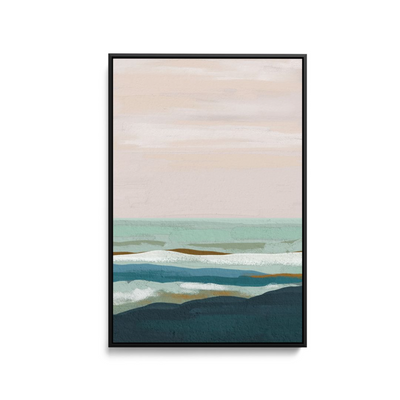How To Install Soak and Stick Wallpaper
DIY Level: Moderate
Our beautiful Soak and Stick wallpaper gives a more traditional look and feel to its contemporary cousin, peel and stick.
It has a thicker, more traditional finish with a similar look and feel to matte art paper.
Applying it is undoubtedly a little more messy than peel and stick, BUT we think the little bit of extra legwork is well worth the effort if you're looking for a premium finish you will love for years to come.
Soak and stick wallpaper is NOT easily removable (ie, once it's on there, you'll need a steamer to remove it down the track as with traditional wallpapers)
Tools You’ll Need:
- A basin at least as wide as your paper drop. (Large plastic storage boxes from discount stores or hardware stores work great).
- Drop cloths or towels if you have carpet or floorboards you need to protect- there will be some water run off as you apply the paper.
- A wallpaper smoother, like this one from Bunnings:
Preparing Your Surface:
- Patch and sand any lumps and bumps in your wall to ensure a smooth surface. Remove any peeling paint remnants from your wall.
- Note that any dust left on the wall can show through the wallpaper as well as affecting the adhesiveness of the paper, so it’s important to clean your wall thoroughly.
- If your wall has been recently painted, please allow 30 days or more for the paint to de-gas before applying the wallpaper. (Note that as stated in descriptions, the paper will not adhere to Dulux Wash and Wear or other teflon paints without additional adhesive).
Application:
- Lay your wallpaper out somewhere first and work out the order of patterns. Your wallpaper pattern will either repeat every one or two drops, so it’s important to pop the rolls side by side and work out their order. Roll out the top 30cm or so of each so you can see how the pattern sits.
- Note that Soak and Stick wallpaper is applied using a butt-join. The panels are pushed next to each other but do not overlap.
- Submerge the entire rolled up cut panel into water and soak for a minimum of 15 seconds and a maximum of 50 seconds. Unravel the panel slightly under water to ensure paste activation. (We found submerging the whole roll for 15 seconds and then pulling it slowly out while letting unravel for the next 10 seconds or so worked well).
- Apply to the wall within two minutes.
- Work from left to right along your wall. Panels are to be laid side by side using the ‘butt-join’, not overlapped.
- Ensure that the first panel is straight - if it’s out of line, the rest of the panels will be too. A string line can help here but is not essential. They’re also available in hardware stores. You will be able to move the paper around on the wall a bit before it fully sticks to get it right.
- Working from the top centre of the panel towards the outside edges, gently rub the wallpaper flat using your smoother.
- Working slowly, move out towards the edges and down the panel, pushing water out as you go.
- Once you reach the end of your wall, use a sharp stanley life to trim the excess paper. Wait til it dries first or you’ll get a jagged edge.
Here's a video of applying Soak and Stick Wallpaper. Please note this was NOT a professional installation and was Gerry's first time applying any type of wallpaper, so we hope it gives an accurate insight into the ease of application of this product for DIY use.




Leave a comment